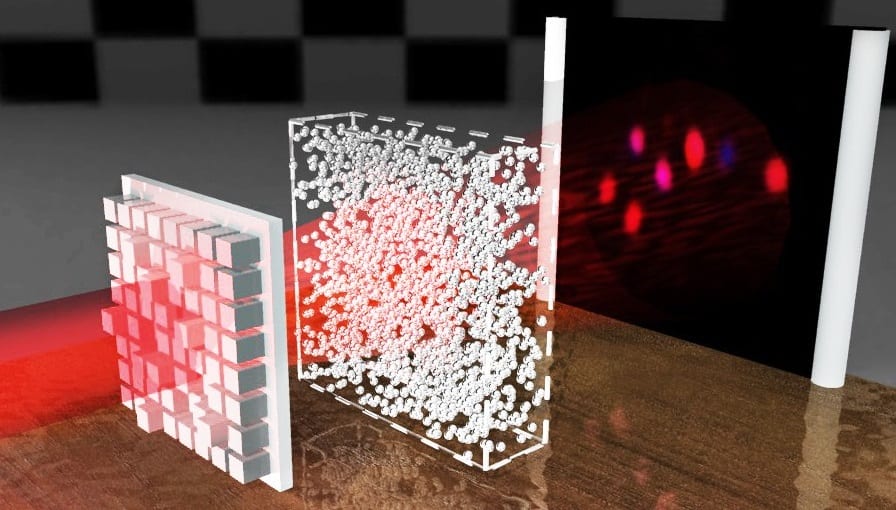
Researchers in the US have shown for the first time how regions of complete darkness within a beam of light can be shaped precisely. Using specially engineered metasurfaces, Federico Capasso and colleagues at Harvard University generated curved 2D sheets where the light intensities are zero. Remarkably, the sheets resemble heart-shaped cookie cutters (see figure). Their technique has a wide array of potential applications including trapping particles and the optical imaging of structures on sub-wavelength scales.
Optical phase singularities describe regions within a beam of light with exactly zero intensity and are ubiquitous within systems of complex waves. So far, the most widely studied examples of these features are found in optical vortices with helical wavefronts, which contain stable, one-dimensional singularities along their axes of propagation. Recently, physicists have begun to envisage a more diverse family of singularities beyond simple lines – including zero-dimensional points and curved 2D sheets.
Titanium dioxide nanopillars
Owing to their stringent requirements in wave phase alignment, these more complex singularities usually occur in extremely rare scenarios. Through the use of advanced new materials, however, techniques are emerging that could artificially produce the required interference patterns. In their study, Capasso’s team generated these features by designing a metasurface comprising cylindrical titanium dioxide nanopillars on a glass substrate.
Within this structure, complex patterns of “superpixels” were made up of uniform nanopillar arrays, separated by carefully chosen sub-wavelength distances. As the metasurface interacted with a uniform incoming wavefront of light, the resulting interference patterns in the transmitted light featured singularities with highly specific shapes.
Sculpting darkness
As a proof-of-concept, Capasso and colleagues designed a metasurface to generate both optical phase and polarization singularity sheets, each curved in such a way to produce a heart-shaped cross-section. The researchers now hope that their demonstration will pave the way for advanced new techniques for sculpting optical patterns out of darkness, just as existing optical materials can sculpt patterns out of light.
Applications of the technique could include new ways to trap particles between regions of high intensity light. The same principles apply to sound waves, and the research could also lead to new acoustic metasurfaces that create silent zones within loud, complex soundscapes.

Indestructible light waves travel through opaque material as if it isn’t there
Perhaps the most important potential use of the technology lies in high-resolution imaging: while the resolution of conventional optical imaging is limited to half the wavelength of the light being used, darkness has no such diffraction limit.
As a result, as darkness interacts with structures over length scales far smaller than the wavelengths of optical light, resulting in characteristic phase or polarization singularities. For the first time, this technique could enable researchers to determine the shapes, sizes, and orientations of nanoparticles from optical images alone.
The research is described in Nature Communications.
